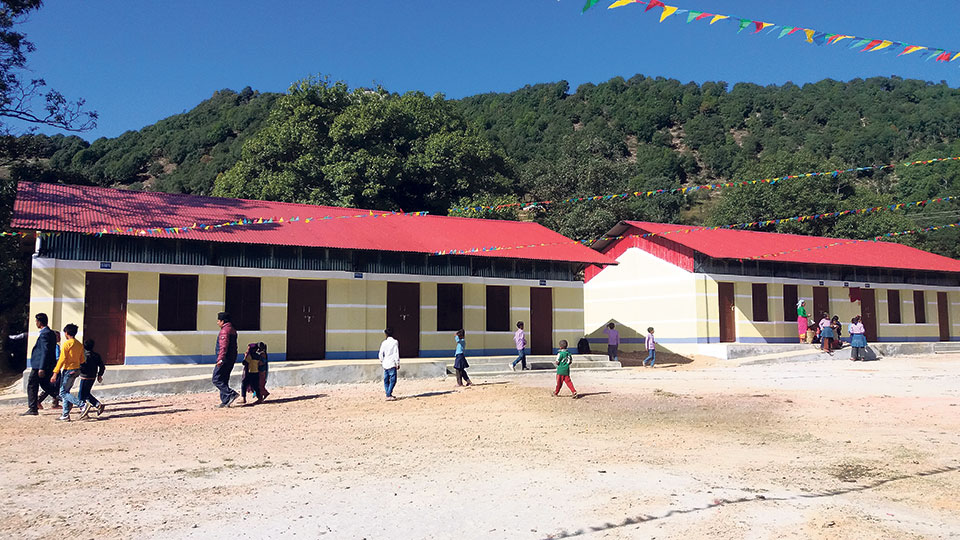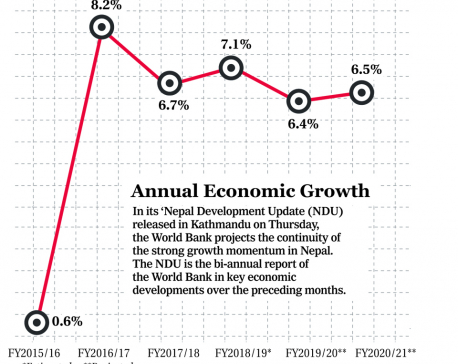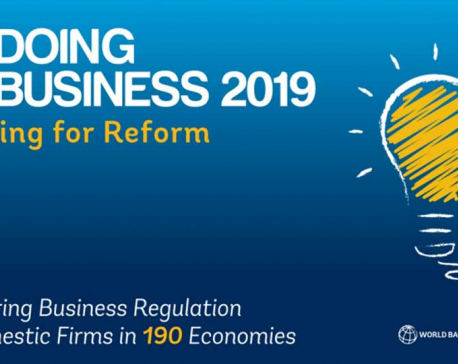
OR
COVID-19
Three UN agencies, World Bank issue new guidelines on the safe reopening of schools
Published On: May 18, 2020 05:41 PM NPT By: Republica | @RepublicaNepal

KATHMANDU, May 18: Three United Nations agencies and the World Bank have issued new guidelines on the safe reopening of schools amidst the ongoing closure that has affected nearly 1.3 billion students worldwide.
The guidelines jointly issued by UNESCO, UNICEF, WFP and the World Bank offer practical advice for national and local authorities on how to keep children safe when they return to school. The guidelines include various measures including those related to policy reform, financing requirements, safe operations, compensating learning, wellness and protection and reaching the most marginalized students.
The agencies have warned that the widespread closures of educational facilities in response to the COVID-19 pandemic present an unprecedented risk to children’s education and wellbeing, particularly for the most marginalized children who rely on school for their education, health, safety and nutrition.
“Rising inequality, poor health outcomes, violence, child labour and child marriage are just some of the long-term threats for children who miss out on school,” a joint press statement issued by them quoted UNICEF Executive Director Henrietta Fore as saying. “We know the longer children stay out of school, the less likely they are to ever return. Unless we prioritize the reopening of schools – when it is safe to do so – we will likely see a devastating reversal in education gains.”
The new guidelines note that while there is not yet enough evidence to measure the impact of school closures on disease transmission rates, the adverse effects of school closures on children’s safety and learning are well documented. Gains made in increasing access to children’s education in recent decades risk being lost and, in the worse cases, reversed completely.
“In the poorest countries, children often rely on schools for their only meal of the day. But with many schools now closed because of COVID, 370 million children are missing out on these nutritious meals which are a lifeline for poor families. They are also being denied the health support they normally get through school," said WFP Executive Director David Beasley. "This could do lasting damage, so when schools reopen it is critical that these meal programmes and health services are restored, which can also help to draw the most vulnerable children back to school.”
The best interests of children and overall public health considerations – based on an assessment of the associated benefits and risks to education, public health and socio-economic factors – must be central to national and local authorities’ decisions to reopen schools, the guidelines say. "Schools must look at how they can reopen better – with improved learning and more comprehensive support for children at the school including health, nutrition, psychosocial support and water, sanitation and hygiene facilities," said the joint press statement.
As countries across the world grapple with when to reopen schools, the UN agencies and the World Bank as part of the Global Education Coalition have urged governments to assess the benefits of classroom-based instruction compared to remote learning, and the risk factors related to reopening of schools, noting the inconclusive evidence around the infection risks related to school attendance.
UNESCO Director-General Audrey Azoulay said these guidelines provide all-round guidance for governments and partners to facilitate the reopening of schools for students, teachers and families. “While many students are falling behind in their learning journey because of prolonged school closures, the decision of when and how to reopen schools, while far from straightforward, should be a priority. Once there is a green light on the health front, a whole set of measures will need to be in place to ensure that no student is left behind," he said.
World Bank Global Director for Education Jaime Saavedra said the priority becomes reintegrating students into school settings safely and in ways that allow learning to pick up again, especially for those who suffered the biggest learning losses, once schools begin to reopen.
"This is a critical moment as it is the launching pad for a new normal that should be more effective and equitable," the joint press statement quoted Saavendra as saying. "To manage reopenings, schools will need to be logistically prepared with the teaching workforce ready. And they will need to have plans specifically for supporting learning recovery of the most disadvantaged students."
The guidelines include the following:
· Policy reform: Policy implications address all dimensions of the guidelines, including clear policies for school opening and closure during public health emergencies, reforms needed to expand equitable access for marginalised and out of school children as well as strengthen and standardize remote learning practices.
· Financing requirements: Address the impact of COVID-19 on education and invest in strengthening education systems for recovery and resilience.
· Safe operations: Ensure conditions that reduce disease transmission, safeguard essential services and supplies and promote healthy behaviour. This includes access to soap and clean water for safe handwashing, procedures on when staff or students feel unwell, protocols on social distancing and good hygiene practices.
· Compensating learning: Focus on practices that compensate for lost instructional time, strengthen pedagogy and build on hybrid learning models such as integrating approaches in remote and distance education. This must include knowledge on disease transmission and prevention.
· Wellness and protection: Expand the focus on students’ well-being and reinforce the protection of children through enhanced referral mechanisms and the provision of essential school-based services including healthcare and school feeding.
· Reaching the most marginalised: Adapt school opening policies and practices to expand access to marginalised groups such as previously out-of-school children, displaced and migrant children and minorities. Diversify critical communications and outreach by making them available in relevant languages and in accessible formats.
You May Like This

WB allocates $ 23 million from Youth Employment Project to help COVID-hit unemployed poor
KATHMANDU, May 5: The World Bank (WB) is funding USD 23 million to scale up direct support to the unemployed poor... Read More...

WB projects economy to grow at 6.4%
KATHMANDU, Dec 13: Nepal’s economy is expected to grow by 6.4% in the current fiscal year – FY2019/20, according to the... Read More...

World Bank sending mission to Nepal on Doing Business ranking
KATHMANDU, Nov 20: The World Bank has confirmed that it is sending a technical mission to Nepal next week to discuss... Read More...



Just In
- World Malaria Day: Foreign returnees more susceptible to the vector-borne disease
- MoEST seeks EC’s help in identifying teachers linked to political parties
- 70 community and national forests affected by fire in Parbat till Wednesday
- NEPSE loses 3.24 points, while daily turnover inclines to Rs 2.36 billion
- Pak Embassy awards scholarships to 180 Nepali students
- President Paudel approves mobilization of army personnel for by-elections security
- Bhajang and Ilam by-elections: 69 polling stations classified as ‘highly sensitive’
- Karnali CM Kandel secures vote of confidence















Leave A Comment